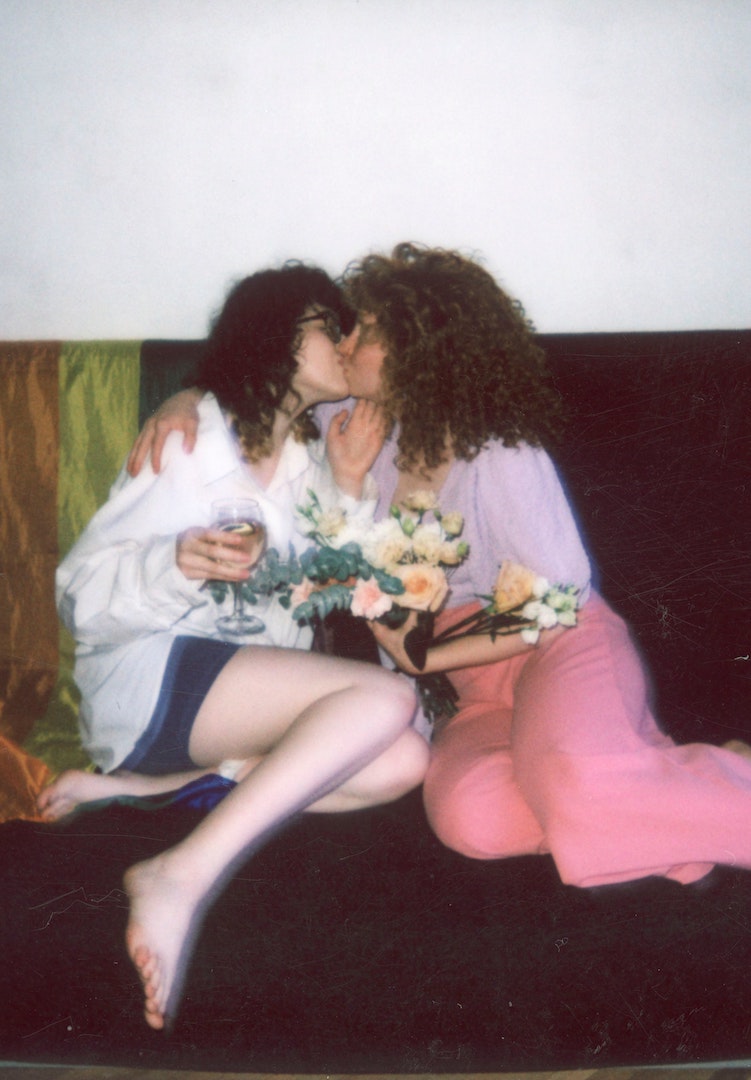An excerpt on queer coding from Hannah McElhinney’s forthcoming book, ‘Rainbow History Class’
WORDS BY Hannah McElhinney
“Let’s face it: for large slabs of history, same-sex attracted people have needed a creative, and discreet, way to find out if the person we’re into is on our wavelength.”
In early 2020, on TikTok, a code evolved among young queer women to help them determine a woman’s sexuality. They would ask, “Do you listen to Girl in Red?” While this Norwegian artist was popular among women-loving women, the question was actually a coded way of asking “Do you also like girls?”
Versions of this coded question will pop up throughout this book, because let’s face it: for large slabs of history, same-sex attracted people have needed a creative, and discreet, way to find out if the person we’re into is on our wavelength. One of the earliest versions of this question concerns the last queen of France, Marie Antoinette. Most people’s knowledge about this French monarch is limited to the phrase ‘Let them eat cake’, which is not only poorly translated from the French ‘Qu’ils mangent de la brioche’ (brioche is more bread than cake), but also something she probably never said.
Looking for more thought-provoking lifestyle content? Head to our Life section.
That said, the phrase does convey the mood of the French people prior to the French Revolution at the end of the eighteenth century. Marie Antoinette was widely detested, and her lavish lifestyle in the Palace of Versailles was frequently mocked in gossip publications. Journalists loved to write of their queen’s promiscuous affairs, especially with two of her close friends, the Princesse de Lamballe and the Duchesse de Polignac. These stories were often accompanied by pornographic illustrations, often featuring large dildos. One such gossip publication went so far as to publish a satirical opera titled The Royal Orgy.
These rumours were spread with the specific goal of slandering the queen’s reputation, but there is no evidence to suggest Marie Antoinette didn’t have relationships with either the princess or the duchess – there are many accounts of her having devoted and intimate connections with both women. Marie Antoinette struggled to have children as well as to consummate her marriage with her husband, Louis XVI (spare a thought for them; they were both very young teenagers, and no one deserves to have the weight of an entire kingdom overshadowing their first time).
The young Marie Antoinette was lonely, and her female friends were dear companions. We don’t know if they were more than that, but as queen, she could certainly have maintained an affair if she wanted to – and let’s face it, the Palace of Versailles certainly has a lot of rooms.
Whether these rumours were a case of where there’s smoke there’s fire, or entirely baseless accusations, in the eyes of sapphic women they were canon. So for more than a century, dropping a mention of Marie Antoinette was a veiled hint at your sapphic desires that only similarly inclined women would understand. We can’t exactly thank Marie Antoinette for this next bit, but the revolution that sent her to the guillotine and ended the French monarchy also had an unexpected outcome for homosexual people.
In 1791, during the French Revolution, a new French constitution was drafted. The French were sick of being ruled by a power that spared not a single care for their wellbeing, so this new constitution excluded all prior laws that had interfered with people’s private lives – including those criminalising sodomy. As a result, France became the first European country to decriminalise homosexuality.
To be clear, this didn’t mean homosexuality was accepted in France (it was still seen as immoral), but it did mean you couldn’t be imprisoned or killed for it, which was a bit of a game-changer. Paris became a covert hub for homosexual people in Europe, and a destination for those fleeing persecution from neighbouring countries. Cruising spots were established and same-sex attracted women experienced growing representation, thanks to the artistic bent of the romantic period.
So by the early nineteenth century, life was improving for same-sex attracted people in France, but in neighbouring England, life was about to get more difficult. The saving grace of England’s Buggery Act 1533 was that it was quite difficult to prosecute, as it required proof that anal penetration had taken place. Given anal sex is typically a fairly private pursuit, it was difficult to prove unless there was a witness. But that didn’t stop prosecutors from trying.
This is an edited extract from ‘Rainbow History Class’ by Hannah McElhinney, published by Hardie Grant Books, RRP $32.99. Available in stores nationally from March 8. You can pre-order a copy here.










